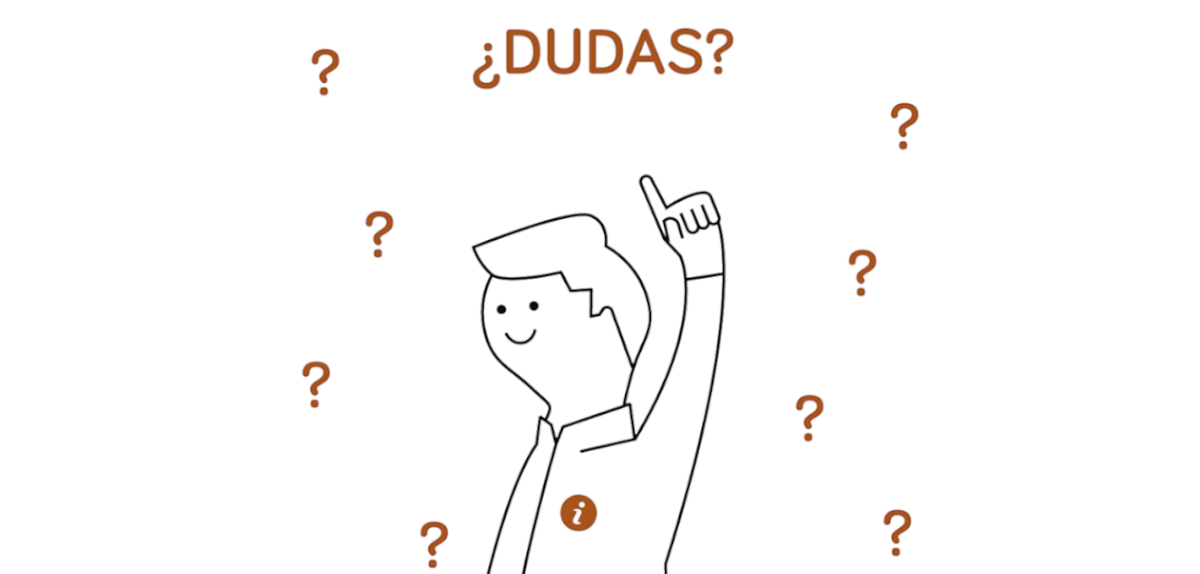
Every day, via the channels the campaign makes available, we receive questions and queries about separating waste and how to properly use the brown bin. So we have decided to answer some of the most common ones. We hope you find this useful and, little by little, you can become an expert in the brown bin!
Should I use a bag to separate organic waste? What type should it be?
Yes, you need to use a bag, because organic waste is collected in bins in the streets and buildings, not directly disposed of in communal composters. If we didn’t use bags, the bins would get dirty, causing bad smells and needing constant cleaning.
As to the type of bag, it is not compulsory but advisable to use compostable bags. With compostable bags we make sure they break down the same as the organic waste when generating biogas.
Another advantage of using this type of bag is that, since they are more breathable, it prevents the liquids contained in organic waste from accumulating, making it easier to transport and reducing any smells.
And just to finish, remember that biodegradable bags are not necessarily compostable. They require different times and conditions to break down. Compostable bags bear the “Okcompost” seal.
What happens to organic waste, biogas or compost?
Organic waste collected in the brown bins is taken by truck to the biomethanation plant in Las Dehesas. The contents of the bags pass through a trommel screen there that removes the largest elements, as they are not considered organic. At the biomethanation complex, organic matter ferments due to the action of microorganisms without the presence of oxygen, to create biogas and a digestate. The biogas undergoes a refining and cleaning process at the Biogas Treatment Plant to obtain biomethane that is injected into the ENAGAS gas network.
The digestate produced during the biogas production process acquires fertilising capacity when suitably treated. A modern composting plant is currently under tender where this digestion will be mixed with pruning waste so as to obtain high-quality compost that can be used as a fertiliser.
Before organic bins existed, organic waste that was placed (now wrongly) in the non-recyclable bin was and is still reused today. Organic matter from the orange bins is subjected to aerobic digestion to obtain a biostabilised material that can be used to improve soil quality; some of it is also used in the biomethanation process (anaerobic digestion) from which biogas is obtained which, as with the biogas from organic waste bags, is then subjected to a refining and cleaning process to obtain biomethane that is injected into the gas network. The digestate obtained from this biomethanation process cannot be transformed into high-quality compost because it is not selectively collected but extracted from the non-recyclable waste and is therefore of lower quality. Even so, it is also subjected to a stabilisation process.
In conclusion, if we all correctly separate this new organic portion, when it is treated we can obtain more biomethane and quality fertiliser, which benefits all residents of Madrid.
Does the pizza box go into the non-recyclable (orange lid) or the organic bin?
Grease hinders the recycling process of the cardboard and paper we place in the blue bin (paper and cardboard). That’s why, when cardboard has grease or oil stains and food remains, it is better to dispose of it in the brown organic bin.
It is usually possible to separate the lid of the pizza box, which is not generally grease stained, so as to place it in the blue bin and place only the stained part in the organic bin.
Do napkins and kleenex go in the orange bin or organic bin?
Firstly, we should note that this applies only to fine cellulose paper, which is what Kleenex, napkins or kitchen paper are made of. In these cases, they should only go with the organic matter if they are stained with food or oil. If they have biological or sanitary stains (blood, etc.) or chemicals such as paint, cleaning or toxic products, etc., they should be disposed of in the orange lidded bin (non-recyclable waste).
This doesn’t apply to writing paper, notebooks, etc., which should still go in the blue bin.
When will the brown bin collection reach the Centro district?
In principle, organic waste collection for the Centro district is scheduled to start in September this year. This district was left until the end due to the special type of rubbish collection it has. This requires precise adjustments in light of what we have learnt, based on its introduction in the other, previous districts.
Do you have any more questions? Remember that the channels you can use to ask us any questions are as follows:
- Via the campaign Twitter profile, @AciertaOrganica.
- By writing to organica@madrid.es
- By calling 010 (toll-free)
- In the “Answering your questions” section on our website.
